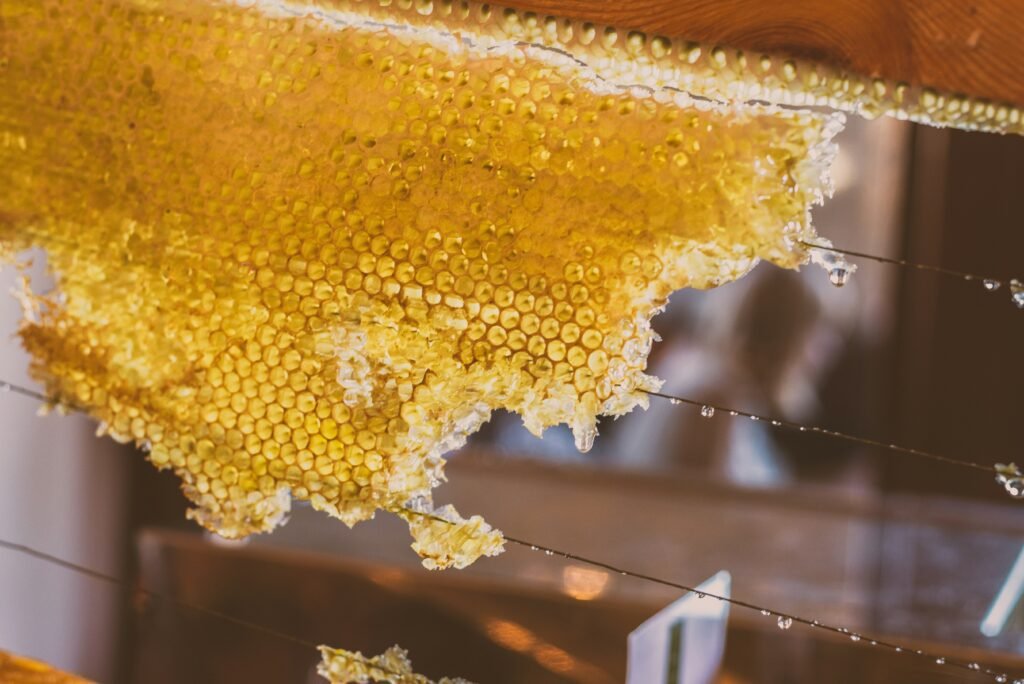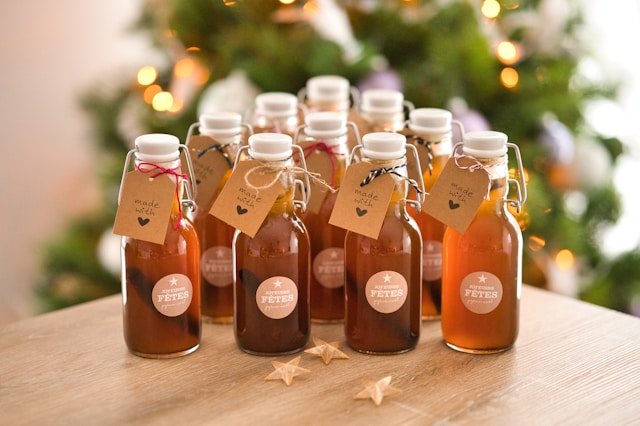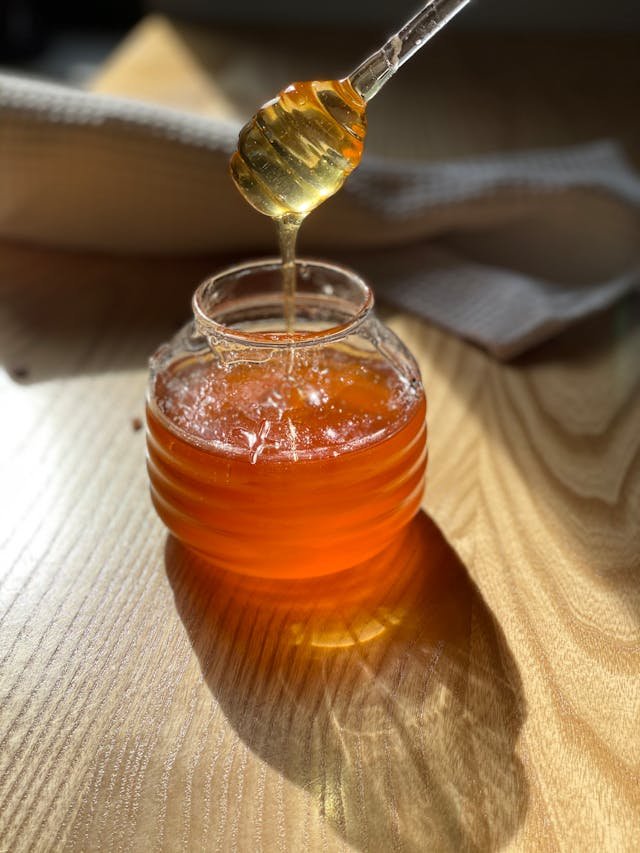Introduction
Australia, renowned for its stunning landscapes and rich biodiversity, produces some of the most unique honeys in the world. Have you ever tasted the distinct flavors of Leatherwood honey from Tasmania’s rainforests, or experienced the robust notes of Ironbark honey from Queensland’s bushlands? Each variety of Australian honey tells a story of its origin, capturing the origin of the flora and the regions they come from.
In this blog post, we invite you to explore the diverse and flavorful world of Australian honey. You’ll learn about the specific plants that contribute to each type, discover their unique characteristics, and find into their various uses—from luxury cooking to natural health remedies.
Join us for travelling the landscapes of Australia, revealing the extraordinary honey varieties that this remarkable continent has to offer. Whether you are a honey lover, a culinary explorer, or someone seeking natural health benefits, this guide will provide you with a deeper understanding and appreciation for the sweet treasures of the Australian wild.
Manuka Honey: An Australian Specialty
Flora
Manuka honey is derived from the nectar of the Manuka tree and the closely related yellow tea tree in Australia. These plants found in coastal regions and wasteland, primarily in New South Wales and Queensland.
Characteristics
• Color: Manuka honey ranges from dark amber to deep brown.
• Texture: It has a thick, viscous consistency.
• Flavor: The taste is strong, earthy, and slightly bitter with a unique aromatic profile.
• Active Compound: It is notable for its high concentration of methylglyoxal (MGO), which gives it potent antibacterial properties.
Usage
Manuka honey is prized for both its cookery and medicinal applications:
• Culinary Uses: Though its strong flavor may not be suitable for all dishes, Manuka honey can be used to add a distinctive taste to marinades, dressings, and health drinks.
• Medicinal Properties: Manuka honey’s antibacterial and anti-inflammatory properties make it highly valued in natural medicine. It’s commonly used in:
o Wound Care: Applied topically to wounds and burns to promote healing and prevent infection.
o Skincare: Incorporated into skincare products for its soothing and healing effects on the skin.
o Cold and Sore Throat Relief: Consumed by the spoonful or mixed into tea to soothe sore throats and alleviate cold symptoms.
• Health Supplements: Often taken daily for its immune-boosting properties and overall health benefits.
Leatherwood Honey: A Tasmanian Treasure
Flora
Leatherwood honey is produced from the beverage of the Leatherwood tree which is native to the rainforests of Tasmania, Australia. These trees flourish in the remote and pristine wilderness areas of the island, particularly in the western regions.
Characteristics
• Color: Leatherwood honey has a light amber to pale yellow color.
• Texture: It is typically smooth and creamy.
• Flavor: Known for its distinctive and complex flavor, Leatherwood honey is floral and aromatic, with a lingering taste that combines notes of spice, citrus, and wildflowers.
Usage
Leatherwood honey is celebrated for its unique taste and versatile uses:
• Culinary Uses:
o Spreads: Its rich flavor makes it perfect for spreading on toast, crumpets, and scones.
o Cooking and Baking: Adds a distinctive sweetness to desserts, marinades, and glazes. It pairs well with cheeses and enhances the flavor of baked goods.
o Gourmet Ingredient: Often used by chefs to add a unique twist to gourmet dishes and beverages.
• Health Benefits:
o Natural Sweetener: Used as a healthier alternative to refined sugar in beverages and recipes.
o Antioxidant Properties: Rich in antioxidants, Leatherwood honey helps combat free radicals and supports overall health.
o Soothing Properties: Can be taken by the spoonful to soothe sore throats and alleviate coughs.
• Skincare and Beauty:
o Moisturizer: Known for its hydrating properties, Leatherwood honey is used in natural skincare products to moisturize and nourish the skin.
o Anti-inflammatory: Helps reduce inflammation and soothe irritated skin when applied topically.
Ironbark Honey: An Australian Classic
Flora
Ironbark honey is harvested from the various Ironbark trees, particularly the Grey Ironbark and Red Ironbark, which are widespread across Australia, especially in Queensland and New South Wales.
Characteristics
• Color: Ironbark honey ranges from amber to dark amber.
• Texture: It has a smooth, viscous consistency.
• Flavor: This honey is known for its robust, full-bodied flavor with hints of malt and a slightly smoky aftertaste.
Usage
Ironbark honey is highly valued for its rich flavor and numerous applications:
• Culinary Uses:
o Sweetener: Its strong flavor makes it an excellent addition to tea and coffee, providing a rich, sweet taste.
o Cooking and Baking: Adds depth to baked goods, sauces, and marinades. It pairs particularly well with roasted meats and vegetables.
o Spreads: Ideal for spreading on toast, crumpets, and scones due to its bold flavor and smooth texture.
• Health Benefits:
o Antibacterial Properties: Contains natural antibacterial compounds that help in fighting infections.
o Rich in Antioxidants: Packed with antioxidants that help protect the body from free radicals and support overall health.
o Energy Source: Provides a natural and sustained energy boost, making it perfect for athletes and active individuals.
• Therapeutic Uses:
o Sore Throat Relief: Effective in soothing sore throats and coughs when consumed by the spoonful or mixed into warm water.
o Digestive Health: Known to aid digestion and soothe gastrointestinal issues when taken regularly.
• Skin Care:
o Moisturizer: Used in natural skincare products for its hydrating and nourishing properties.
o Healing Agent: Applied topically to minor wounds, cuts, and burns to promote healing and prevent infection.
Macadamia Honey: A Luxurious Australian Delight
Flora
Macadamia honey is sourced from the Macadamia trees, native to the rainforests of Queensland and New South Wales in Australia. These trees, also known for producing the famous macadamia nuts, contribute to a unique and premium honey variety.
Characteristics
• Color: Macadamia honey typically has a rich, golden amber color.
• Texture: It boasts a smooth, buttery texture.
• Flavor: Known for its distinctive, nutty flavor with subtle floral notes and a hint of caramel. It has a rich and luxurious taste that sets it apart from other honeys.
Usage
Macadamia honey is prized for its gourmet quality and versatile applications:
• Culinary Uses:
o Sweetener: Its unique flavor makes it an exceptional sweetener for teas, coffees, and smoothies.
o Baking and Cooking: Adds a distinctive taste to baked goods, glazes, and sauces. It’s particularly well-suited for use in desserts and pastries.
o Gourmet Ingredient: Ideal for drizzling over cheese platters, yogurt, or fresh fruit. It enhances the flavor of marinades and dressings.
• Health Benefits:
o Nutrient-Rich: Contains vitamins, minerals, and antioxidants that support overall health.
o Energy Source: Provides a quick and natural energy boost, making it a great addition to a pre- or post-workout snack.
o Digestive Health: Known to aid in digestion and support gut health when consumed regularly.
• Therapeutic Uses:
o Sore Throat Relief: Consumed by the spoonful or mixed into warm water to soothe sore throats and alleviate coughs.
o Natural Remedy: Used in natural remedies for its anti-inflammatory and antibacterial properties.
• Skin Care:
o Moisturizer: Incorporated into natural skincare products for its hydrating and nourishing benefits.
o Healing Agent: Applied topically to minor cuts, burns, and skin irritations to promote healing and prevent infection.
Coastal Heathland Honey: A Unique Treasure
Flora
Coastal Heathland honey is produced from the nectar of a variety of wildflowers and woody plant found in the coastal heathlands of Australia. These regions, particularly along the coastlines of New South Wales, Victoria, and Tasmania, are rich in diverse flora such as Banksia, Tea Tree and various coastal wildflowers.
Characteristics
• Color: Coastal Heathland honey typically ranges from light amber to golden brown.
• Texture: It has a smooth and rare texture.
• Flavor: Known for its complex and rich flavor profile, which includes floral, slightly spicy, and earthy notes. It often has a distinctive aromatic quality due to the variety of coastal wildflowers.
Usage
Coastal Heathland honey is valued for its unique taste and numerous applications:
• Culinary Uses:
o Sweetener: Its complex flavor makes it an excellent natural sweetener for teas, coffees, and herbal infusions.
o Baking and Cooking: Adds a unique taste to baked goods, dressings, and marinades. It pairs well with both sweet and savory dishes.
o Gourmet Ingredient: Perfect for drizzling over cheese platters, yogurt, or fresh fruit. It enhances the flavor of gourmet dishes and desserts.
• Health Benefits:
o Antioxidant-Rich: Contains a high level of antioxidants that help protect the body from free radicals and support overall health.
o Energy Source: Provides a natural and sustained energy boost, ideal for active individuals and athletes.
o Digestive Health: Known to aid digestion and promote gut health when consumed regularly.
• Therapeutic Uses:
o Sore Throat Relief: Consumed by the spoonful or mixed into warm water to soothe sore throats and alleviate coughs.
o Natural Remedy: Used in natural remedies for its anti-inflammatory and antibacterial properties.
• Skin Care:
o Moisturizer: Incorporated into natural skincare products for its hydrating and nourishing benefits.
o Healing Agent: Applied topically to minor cuts, burns, and skin irritations to promote healing and prevent infection.
Jarrah Honey: A Western Elegance
Flora
Jarrah honey is harvested from the nectar of the Jarrah tree, which is native to the Jarrah forests of southwestern Australia, particularly in the state of Western Australia. These majestic trees, known for their tall height and beautiful blossoms, produce a unique and highly prized honey variety.
Characteristics
• Color: Jarrah honey exhibits a dark amber to rich mahogany color.
• Texture: It has a thick, velvety texture.
• Flavor: Renowned for its bold, robust flavor with caramel and molasses undertones. It boasts a distinctively rich and earthy taste that sets it apart from other honey varieties.
Usage
Jarrah honey is esteemed for its exceptional flavor and diverse uses:
• Culinary Uses:
o Sweetener: Its intense flavor makes it an excellent natural sweetener for beverages such as tea and coffee.
o Baking and Cooking: Adds depth and complexity to baked goods, marinades, and sauces. It pairs particularly well with savory dishes and meats.
o Gourmet Ingredient: Perfect for drizzling over desserts, cheeses, or fresh fruit. It elevates the flavor of gourmet dishes and culinary creations.
• Health Benefits:
o Antibacterial Properties: Contains high levels of natural antibacterial compounds that help in fighting infections and promoting overall health.
o Antioxidant-Rich: Loaded with antioxidants, it helps protect the body from oxidative stress and supports immune function.
o Wound Healing: Known for its healing properties, it is often used topically to promote wound healing and skin regeneration.
• Therapeutic Uses:
o Respiratory Health: Consumed by the spoonful or mixed into warm water to soothe coughs, colds, and respiratory infections.
o Digestive Aid: Known to aid digestion and alleviate gastrointestinal discomfort when taken regularly.
• Skincare:
o Moisturizer: Used in natural skincare products for its hydrating and nourishing benefits.
o Healing Agent: Applied topically to minor cuts, burns, and skin irritations to promote healing and prevent infection.
Stringybark Honey: A Distinctive flavor
Flora
Stringybark honey is crafted from the nectar of various species of Stringybark trees, mainly found in the forests and woodlands of Australia. These trees, belonging to the Eucalyptus genre.
Characteristics
• Color: Stringybark honey ranges from medium amber to dark amber.
• Texture: It possesses a smooth, creamy consistency.
• Flavor: Known for its robust, full-bodied flavor with distinctively earthy and woody undertones. It boasts a rich and complex taste profile that appeals to discerning palates.
Usage
Stringybark honey is revered for its bold flavor and versatile applications:
• Culinary Uses:
o Sweetener: Its strong flavor makes it an ideal natural sweetener for teas, coffees, and hot beverages.
o Cooking and Baking: Adds depth and richness to baked goods, savory dishes, and marinades. It pairs exceptionally well with grilled meats and roasted vegetables.
o Gourmet Ingredient: Perfect for drizzling over cheeses, gourmet salads, or artisanal bread. It imparts a distinctive taste to gourmet creations.
• Health Benefits:
o Antibacterial Properties: Contains potent antibacterial compounds that contribute to its therapeutic properties and immune-boosting benefits.
o Antioxidant-Rich: Packed with antioxidants, it helps combat oxidative stress and supports overall health.
o Respiratory Support: Consumed orally or mixed with warm water to soothe coughs, sore throats, and respiratory discomfort.
• Therapeutic Uses:
o Digestive Health: Known to aid digestion and alleviate gastrointestinal issues when consumed regularly.
o Wound Healing: Applied topically to minor wounds, cuts, and skin irritations to promote healing and prevent infection.
• Skincare:
o Moisturizer: Used in natural skincare formulations for its hydrating and nourishing properties.
o Healing Agent: Applied to the skin to soothe and heal minor abrasions, burns, and insect bites.
What are the Uses and Benefits of Australian honey?

Australian honey is celebrated not only for its diverse and unique flavors but also for its wide range of uses and health benefits. Here is a brief overview of how Australian honey can be incorporated into daily life and its associated benefits:
Culinary Uses:
• Natural Sweetener: Australian honey is a healthier alternative to refined sugar, adding natural sweetness to tea, coffee, and smoothies.
• Cooking and Baking: Enhances the flavor of baked goods, marinades, sauces, and dressings. Its unique taste profiles, from floral to earthy, add depth to both sweet and savory dishes.
• Gourmet Ingredient: Perfect for drizzling over cheese platters, yogurt, and fresh fruit, or incorporating into gourmet recipes to elevate their flavor.
Health Benefits:
• Antibacterial Properties: Many Australian honeys, such as Manuka and Jarrah, contain high levels of antibacterial compounds, making them effective in fighting infections and promoting wound healing.
• Rich in Antioxidants: Honey varieties like Yellow Box and Ironbark are rich in antioxidants, which help protect the body from oxidative stress and support overall health.
• Digestive Health: Regular consumption of honey aids in digestion and promotes gut health, helping to soothe gastrointestinal issues.
• Energy Boost: Honey is a natural source of carbohydrates, providing a quick and sustained energy boost, ideal for athletes and active individuals.
• Respiratory Relief: Consuming honey can soothe sore throats, alleviate coughs, and help manage symptoms of colds and respiratory infections.
Therapeutic Uses:
• Wound Healing: Applied topically, honey can promote the healing of minor cuts, burns, and skin irritations due to its antibacterial and anti-inflammatory properties.
• Skincare: Incorporated into natural skincare products, honey acts as a moisturizer and healing agent, nourishing and hydrating the skin.
What makes Australian Honey Unique?
Australian honey stands out globally due to several distinctive factors:
Diverse Flora: Australia’s varied ecosystems, from coastal areas to vast eucalyptus forests, provide a rich array of floral sources for bees. Unique plants such as the Manuka tree, Leatherwood tree, and various Eucalyptus species contribute to the distinct flavors and characteristics of Australian honey varieties.
Distinctive Flavors: The diverse plant life gives Australian honey a wide range of flavors, from the strong, medicinal taste of Manuka honey to the delicate, floral notes of Coastal areas honey. Each type reflects the unique terroir of its region, making the flavor profiles complex and varied.
High Quality and Purity: Australia’s strict biosecurity regulations ensure that its honey remains free from many of the pests and diseases that affect honey production elsewhere. This results in honey that is often considered purer and of higher quality.
Medicinal Properties: Certain Australian honeys, particularly Manuka and Jarrah, are renowned for their high antibacterial activity. These honeys contain compounds like methylglyoxal (MGO) and hydrogen peroxide, which provide significant health benefits, including wound healing and immune support.
Environmental Sustainability: Australian beekeepers often practice sustainable and environmentally friendly methods. The vast, unspoiled landscapes allow for organic and natural beekeeping, contributing to the high quality and sustainability of the honey produced.
Rare and Exclusive Varieties: Some Australian honey varieties, such as Leatherwood honey from Tasmania and Jarrah honey from Western Australia, are unique to their specific regions. These rare honeys are highly prized both locally and internationally.
Conclusion
Australian honey, with its ample varieties and unique characteristics, is a witness to the country’s rich biodiversity and natural beauty. From the medicinal Manuka honey to the versatile Yellow Box, each type offers something special for both culinary and health applications. Whether you are a chef, a health conscious, or simply someone who appreciates fine honey, exploring the different types of Australian honey is a journey worth taking.
Frequently Asked Question (FAQs)
Q1: Is Australian honey suitable for people with allergies?
A: While honey is generally safe, some individuals with severe pollen allergies may react to certain types. It’s always best to consult with a healthcare provider if you have concerns.
Q2: How should I store Australian honey to keep it fresh?
A: Store honey in a cool, dry place away from direct sunlight. Ensure the container is tightly sealed to prevent moisture absorption.
Q3: Can infants consume Australian honey?
A: No, it is not recommended to give honey to infants under one year old due to the risk of botulism.
Q4: What makes Manuka honey different from other types of honey?
A: Manuka honey contains unique antibacterial properties due to its high concentration of methylglyoxal (MGO), making it particularly valuable for medicinal uses.
Q5: Are there any certifications to look for when buying Australian honey?
A: Look for certifications such as “100% Australian Honey” and labels indicating the floral source to ensure authenticity and quality.



